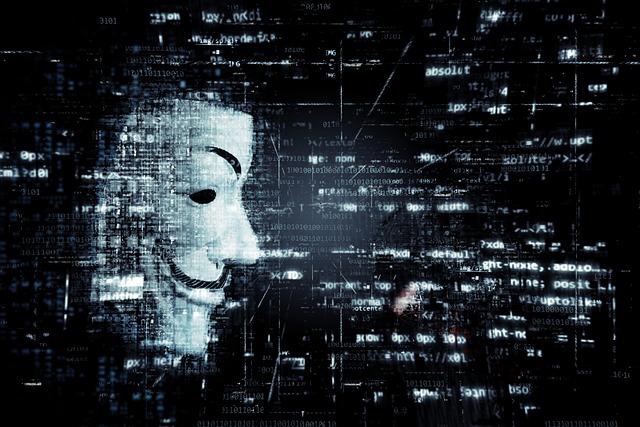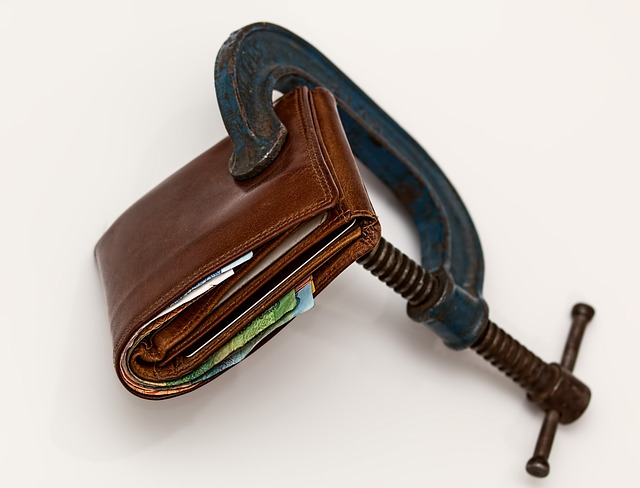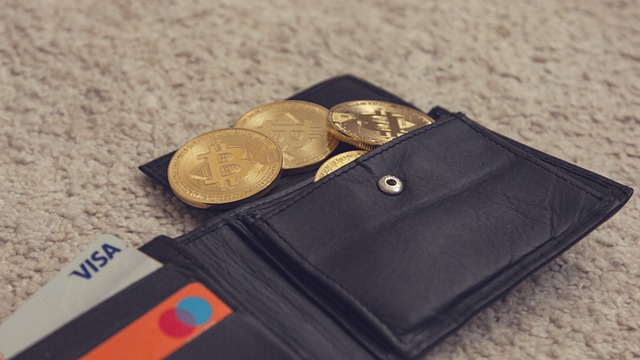Welcome to the world of cryptocurrency, where decentralized digital currencies are revolutionizing the way we transact and invest. With the rise in popularity of cryptocurrencies, it can be overwhelming for beginners to navigate the vast sea of options available. One such emerging cryptocurrency is Avalanche, which has been gaining attention and momentum in the market.
In this comprehensive guide, we will dive into the world of Avalanche and provide a detailed overview for beginners. We aim to help you understand the technology behind Avalanche, its key features, and its potential for future growth. Whether you're a seasoned crypto investor or someone new to this space, this guide will equip you with the knowledge you need to understand and potentially invest in Avalanche.
Understanding Avalanche
Avalanche cryptocurrency has quickly gained recognition and popularity in the digital world. As the cryptocurrency market continues to grow, more and more investors are turning to alternative currencies like Avalanche to diversify their portfolios. In this comprehensive guide, we will delve into the world of Avalanche and provide a detailed overview for beginners to understand this cryptocurrency.
History and Background of Avalanche
Avalanche was founded in 2020 by a team of experienced individuals in the fields of computer science, engineering, and finance. The goal of the project was to create a decentralized platform that could process transactions faster and more efficiently than other cryptocurrencies.
The backbone of Avalanche is its unique consensus mechanism known as Avalanche consensus. This was created by the founder, Emin Gün Sirer, and has been praised for its innovative approach to solving the scalability issues of other cryptocurrencies.
The Avalanche network was officially launched in September 2020 and has since gained a significant following in the crypto community.
Technology and Key Features
Avalanche uses a novel approach to consensus called the Avalanche protocol. This protocol relies on a combination of a directed acyclic graph (DAG) and the Byzantine fault tolerance (BFT) algorithm. This allows for high throughput, fast confirmation times, and low fees, making it a highly efficient and scalable platform.
One of the key features of Avalanche is its ability to process thousands of transactions per second, making it one of the fastest cryptocurrencies in the market. It also boasts near-instant confirmation times, making it an ideal choice for those looking for quick and seamless transactions.
Avalanche also allows for the creation of custom subnetworks, allowing for different types of assets to be created on its platform. This opens up a world of possibilities for developers and businesses to create their own tokens and applications.
Differences from Other Cryptocurrencies
One of the main differences between Avalanche and other cryptocurrencies is its consensus mechanism. While most cryptocurrencies rely on either proof-of-work or proof-of-stake, Avalanche uses a combination of the two, making it more secure and efficient.
Additionally, Avalanche's subnetworks allow for interoperability between different blockchains, making it easier for different cryptocurrencies to communicate and work together.
Furthermore, Avalanche is designed to be highly scalable, with no limit on the number of transactions that can be processed per second. This sets it apart from other cryptocurrencies like Bitcoin, which has a limited throughput and often experiences network congestion during high volumes of transactions.
In Conclusion
In this section, we have discussed the history and background of Avalanche, the technology behind it, and its key features that make it stand out in the cryptocurrency market. We have also highlighted the key differences between Avalanche and other cryptocurrencies, showing its potential for long-term growth and adoption. In the next section, we will dive deeper into how Avalanche works and the role of the AVAX token in its ecosystem.
How Does Avalanche Work?
Avalanche is a revolutionary new cryptocurrency that is quickly gaining popularity among investors and enthusiasts. But what sets it apart from other cryptocurrencies? In this section, we will dive into the inner workings of Avalanche and explore how it operates to provide a secure, fast, and efficient network for its users.
The Consensus Mechanism
At the heart of Avalanche lies its unique consensus mechanism, called Avalanche Consensus. This mechanism utilizes a novel approach called “meta-stability,” which allows for a quick and efficient validation of transactions. Essentially, nodes on the Avalanche network can come to a consensus on the state of the network within a matter of seconds, making it one of the fastest and most scalable networks in the world.
Validators and Stakers
Validators play a crucial role in maintaining the security and integrity of the Avalanche network. These validators are responsible for verifying and validating transactions, ensuring that they are legitimate and following the rules of the network. In return for their efforts, validators are rewarded with AVAX tokens. Stakers, on the other hand, are users who lock up their AVAX tokens to help secure the network. In return, they also receive rewards for their contributions.
Transaction Speed and Cost Efficiency
One of the key selling points of Avalanche is its lightning-fast transaction speed. Traditional blockchains can take several minutes or even hours to process a transaction, while Avalanche can do it in a matter of seconds. This is made possible by the unique consensus mechanism and the ability to process thousands of transactions per second. Additionally, the cost of transactions on Avalanche is significantly lower compared to other cryptocurrencies, making it an attractive option for users looking for cost-efficient transactions.
The AVAX Token
The AVAX token plays a crucial role in the Avalanche ecosystem. It serves as the native token of the network and is used for various purposes, such as paying for transaction fees, staking, and participating in governance. As the network grows and more use cases for the AVAX token emerge, its value is expected to increase, making it a potentially valuable investment for users.
Token Distribution and Use Cases
The AVAX token has a total supply of 720 million, with a majority of them being distributed through a public sale. This ensures a fair and decentralized distribution of tokens. Some of the primary use cases for the AVAX token include staking, participating in governance decisions, and paying for network fees. As the ecosystem grows, more use cases are expected to arise, further increasing the demand and value of the AVAX token.
Overall, Avalanche offers a highly efficient and secure network for its users, with its unique consensus mechanism and the use of the AVAX token. Its fast transaction speed, low cost, and potential for future growth make it an attractive option for investors and users alike.
The AVAX Token
The AVAX token is the native cryptocurrency of the Avalanche network. It is a crucial element that powers the entire ecosystem and plays a vital role in its functioning. In this section, we will explore the purpose and utility of the AVAX token, its distribution, and potential use cases.
Purpose and Utility:
The AVAX token serves as the primary means of value exchange on the Avalanche network. It is used for payments, fees, and rewards within the ecosystem. One of its main purposes is to incentivize network participants to secure and maintain the Avalanche network. Validators and stakers are rewarded in AVAX tokens for their important role in maintaining the network's security and integrity.
The AVAX token also has utility in the form of governance rights. Token holders can participate in the decision-making process for network upgrades and changes through on-chain governance. This gives AVAX token holders a say in the future development and direction of the Avalanche network.
Token Distribution:
The initial distribution of AVAX tokens occurred through a private and public sale, with a total of 720 million tokens being sold. The remaining tokens were allocated to the Avalanche foundation, team, and ecosystem development. The token's distribution is designed to ensure a fair and decentralized network.
The current circulating supply of AVAX tokens is around 60 million, with a maximum supply of 720 million. The token's scarcity and demand are expected to increase over time, potentially driving up its value.
Use Cases:
The AVAX token has several use cases within the Avalanche ecosystem. One of the most significant use cases is staking. Users can stake their AVAX tokens to secure the network and earn rewards in return. This provides an opportunity for passive income for token holders.
Additionally, the AVAX token can be used for payments and transactions on the Avalanche network. With its fast transaction speed and low fees, it is a convenient and efficient means of value exchange.
Furthermore, the AVAX token is expected to have more use cases as the Avalanche ecosystem grows and expands. This may include governance rights for other platforms built on top of the Avalanche network, such as decentralized applications (dApps) and other financial services.
In conclusion, the AVAX token is a crucial element of the Avalanche ecosystem, with multiple use cases and potential for future growth. Its scarcity, utility, and potential for staking rewards make it an attractive investment opportunity. As the Avalanche network continues to gain popularity and adoption, the AVAX token is likely to play an even more significant role in the cryptocurrency space.
Benefits of Avalanche
Avalanche is a promising cryptocurrency that has been gaining popularity in the crypto market. Its unique features and technology make it stand out from other cryptocurrencies, making it a valuable asset for investors and users alike. In this section, we will discuss the numerous benefits of Avalanche and why it has the potential for future growth and adoption.
Scalability and Interoperability:
One of the main benefits of Avalanche is its scalability, which refers to its ability to handle a large volume of transactions without compromising its performance. Unlike other cryptocurrencies that face issues with scalability, such as long transaction times and high fees, Avalanche uses a novel consensus mechanism called Avalanche Consensus, which allows for near-instant transactions with low fees. This makes it a more practical and efficient choice for everyday use, making it a viable option for mass adoption.
Moreover, Avalanche is highly interoperable, meaning it can interact with other blockchains and their assets seamlessly. This is made possible through Avalanche's bridge chains, which allow for the easy transfer of assets between different networks. This interoperability not only increases the utility of Avalanche but also opens up opportunities for partnerships and collaborations with other projects.
Addresses Common Issues:
Avalanche addresses common issues faced by other cryptocurrencies, such as network congestion, high fees, and scalability limitations. Its unique consensus mechanism ensures that transactions are confirmed quickly and efficiently, even during periods of high network usage. Additionally, its interoperability allows for the easy exchange of assets, reducing the need for multiple transactions and reducing fees.
Furthermore, Avalanche uses a flexible and adaptive platform that can accommodate a wide range of decentralized applications (dApps). This means that Avalanche can support a variety of use cases, making it a versatile and practical choice for developers and users alike.
Potential for Future Growth:
With its impressive features and technology, it's no surprise that Avalanche has the potential for future growth. In fact, it has already gained significant attention from investors and institutions, with its native token AVAX being listed on major exchanges and being backed by renowned investors.
Moreover, Avalanche's ecosystem continues to expand, with various projects and dApps being built on its platform. This not only increases the utility of Avalanche but also creates more opportunities for value creation and growth. As more users and developers become familiar with Avalanche, its potential for adoption and growth will only continue to increase.
In conclusion, Avalanche offers numerous benefits that make it a highly competitive cryptocurrency in the market. Its scalability, interoperability, and ability to address common issues faced by other cryptocurrencies make it a promising choice for investors and users alike. With its potential for future growth and adoption, Avalanche is definitely a project to keep an eye on in the ever-evolving world of cryptocurrency.
Potential Challenges
As with any emerging technology, Avalanche cryptocurrency is not without its potential challenges and risks. While it has gained popularity and recognition in the crypto community, there are still some concerns that investors and users should be aware of.
One of the biggest challenges facing Avalanche is the regulatory landscape. As governments around the world continue to grapple with how to regulate cryptocurrencies, there is a risk that regulations may stifle the growth and adoption of Avalanche. This could lead to restrictions on the use of the AVAX token or limitations on the transactions and interactions within the Avalanche network. It is important for investors to stay updated on any regulatory changes that may affect Avalanche and to ensure compliance with any laws or regulations in their respective jurisdictions.
Another potential challenge for Avalanche is the competition within the crypto market. With new cryptocurrencies being launched every day, there is always a risk of being overshadowed by a new and more innovative project. Additionally, established cryptocurrencies such as Bitcoin and Ethereum still hold significant market share and could potentially pose a threat to the growth of Avalanche. However, Avalanche does have distinct advantages over other cryptocurrencies, such as its high transaction speed and low fees, which could help it stay competitive in the market.
Another concern for investors is the potential for centralization within the Avalanche network. While the network is currently decentralized, there is a risk that a small number of validators could hold a significant amount of AVAX tokens. This could lead to a concentration of power and control within the network, which goes against the principles of decentralization that cryptocurrencies are built upon. However, the Avalanche team has stated their commitment to maintaining a decentralized network and has implemented measures to prevent such centralization.
To address these potential challenges, there are a few strategies that investors and users can employ. Firstly, staying informed and updated on any regulatory changes is crucial. This can help investors anticipate any potential impact on Avalanche and make informed decisions. Additionally, diversifying investments across different cryptocurrencies can help mitigate the risk of competition. This way, even if one cryptocurrency faces challenges, the overall investment portfolio may still perform well.
Furthermore, the Avalanche community has a strong focus on open communication and transparency. This can help address concerns and keep the network accountable in maintaining decentralization. It is also important for investors to do their own research and due diligence before investing in any cryptocurrency, including Avalanche. This can help them understand the potential risks and make informed decisions.
In conclusion, while there are potential challenges and risks associated with Avalanche, it is important to note that every cryptocurrency faces similar challenges in their early stages. With its innovative technology, strong community, and potential for future growth, Avalanche remains a promising investment opportunity. By staying informed and adopting strategies to mitigate risks, investors can confidently participate in the Avalanche ecosystem.
How to Get Started with Avalanche
Purchasing and storing AVAX tokens is the first step to getting started with Avalanche. In this section, we will provide you with a step-by-step guide on how to buy and store AVAX tokens, as well as how to participate in staking and earning rewards on the Avalanche network.
Step 1: Choose a Cryptocurrency Exchange
The first step is to choose a reputable cryptocurrency exchange that supports AVAX tokens. Some popular options include Binance, Huobi, and OKEx. Make sure to do your own research and choose an exchange that is available in your country and offers secure storage for your tokens.
Step 2: Create an Account
Once you have chosen an exchange, you will need to create an account by providing some basic personal information and verifying your identity. This process may vary depending on the exchange, but it usually involves providing a government-issued ID and proof of address.
Step 3: Deposit Funds
After your account is verified, you can deposit funds into your exchange account. You can use fiat currency, such as USD or EUR, or other cryptocurrencies to buy AVAX tokens. Once your funds are deposited, you can proceed to the next step.
Step 4: Purchase AVAX Tokens
Using the funds in your exchange account, you can now purchase AVAX tokens. You can do this by navigating to the AVAX trading pair and placing a buy order. The price of AVAX tokens will be displayed on the exchange, and you can choose to buy at the current market price or set your own price.
Step 5: Transfer AVAX Tokens to a Wallet
After purchasing AVAX tokens, it is recommended to transfer them to a wallet for safekeeping. This can be a hardware wallet, such as Ledger or Trezor, or a software wallet like the Avalanche Wallet. Make sure to follow the instructions provided by your wallet provider for securely storing your AVAX tokens.
Participating in Staking on Avalanche:
Staking on Avalanche is a great way to earn rewards while also helping to secure the network. Here's how you can participate in staking:
Step 1: Set up a Validator Node
To become a validator on the Avalanche network, you will need to set up a node. This can be done by following the instructions provided on the Avalanche website or by joining a staking pool.
Step 2: Delegate Your AVAX Tokens
After setting up a validator node, you can then delegate your AVAX tokens to your node or a staking pool. This allows you to participate in staking without the technical requirements of running a node.
Step 3: Earn Rewards
By participating in staking, you can earn rewards in the form of AVAX tokens. The amount of rewards you earn will depend on factors such as the number of tokens you have staked and the network's overall staking rate.
Learning More about Avalanche:
As a beginner, it is important to continue learning about Avalanche and its ecosystem. Here are some resources to help you get started:
– The Avalanche website: This is the official source for information on the Avalanche network, its technology, and its ecosystem.
– Community forums and social media groups: Joining online communities of Avalanche enthusiasts is a great way to stay updated and learn from others.
– Avalanche Academy: The Avalanche Academy offers a comprehensive educational program for beginners to learn about the network's technology and use cases.
In conclusion, Avalanche offers a promising investment opportunity with its advanced technology and potential for growth. By following the steps outlined in this guide, you can confidently get started with Avalanche and participate in its ecosystem. Remember to always do your own research and never invest more than you can afford to lose.






